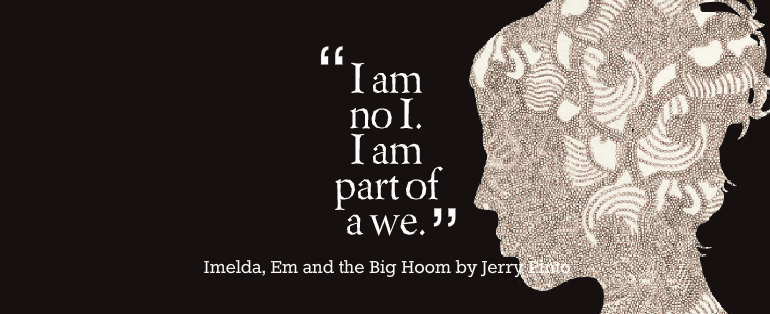Described as “95 percent fact and 95 percent fiction”, Jerry Pinto’s novel Em and the Big Hoom deals with the trauma of bipolar disorder with honesty and humour.
We should never judge (and pick) a book by its cover, but Em and the Big Hoom is so beautifully designed that you can’t help but notice (and eventually buy it). Its deep-set purple colour, glossy red flyleaf, and coloured text block are eye catching. That’s how it tempts you first and then you pick it up, only to discover that it is as interesting as its cover promised.

Em and the Big Hoom is a Sahitya Akademi award-winning novel written by journalist and writer, Jerry Pinto. It is the story of a boy growing up in a one-bedroom-hall-kitchen flat in Mahim, Mumbai, with his mentally unsound mother, Imelda (Em); father, Augustine (Big Hoom); and his elder sister, Susan. The story starts after Imelda suddenly falls into a deep-rooted bipolar disorder which ends with her death.
Imelda is an uncouth, tea sipping and beedi smoking lady (who doesn’t consider discussing sex with her children a taboo), but despite her crassness, you will end up liking her. However, it’s the stoic father who wins hearts. He is the one who holds things together; he pays the bills, cooks, and washes the metallic smelling blood off the floor each time Em is rushed to the hospital after her failed suicide attempt. While The Big Hoom is the comfort, Em is an adventure. The story is narrated by unnamed son who is endearing, vulnerable, and loves his mother with “a helpless corroded love”. The characters feel so humane and real that it seems unfair to label Em and the Big Hoom as fiction instead of a memoir.
A major part of the story has references made to the letters and journal entries, from which Imelda and Augustine’s history is unearthed. Unlike Augustine, who seems like one of the “solid–as-a-rock men of the world who rarely give the impression that they have any past or a private life”, his letters offer insight into his romantic feelings for Imelda. Sample this letter he wrote from Paris: “You would like Paris, I think. There is a casual beauty about it, rather like yours.”
The 235 page long book is littered with ample of feminist-y snippets: like, the moment when Imelda asserts control over her salary, her reaction when she discovers a vacuum cleaner (“I cried when I saw my first vacuum cleaner, I felt it was kindness to women everywhere”), and when Augustine assures her before marriage that “Your body is yours to give or not”.
The most interesting aspect of the novel is that even though there are many books written about Mumbai, it is Jerry Pinto who paints Mumbai from the rare perspective of Goan Catholics against a rare backdrop of Mahim and city’s psychiatric wards.
You should read this masterpiece if you are looking for a story of vulnerability, tragedy and strength.
Feature Picture Credits: Amil Sayed
Niharika Dabral




Comments are closed.